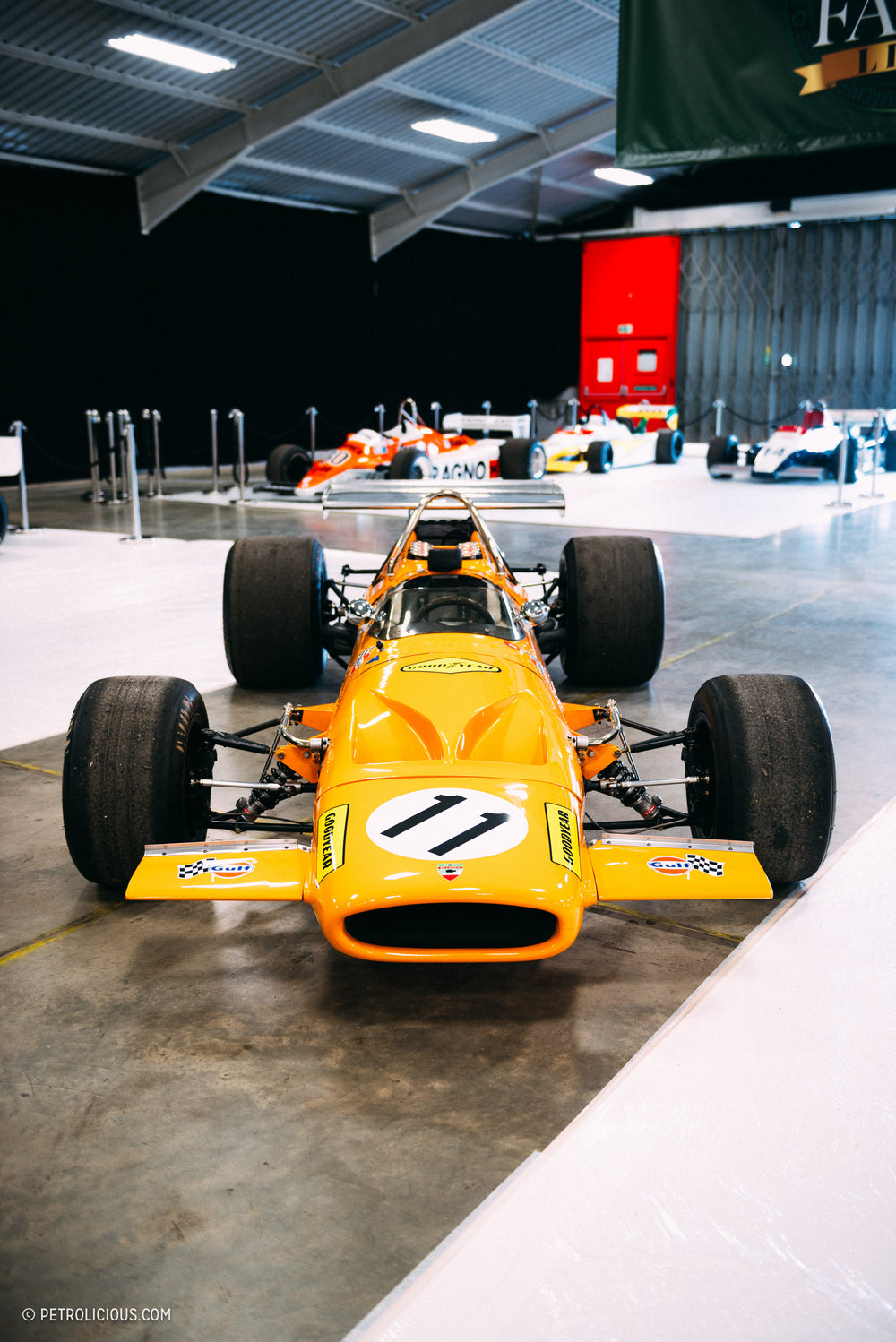It’s quite easy to forget in the vastness of his All-American legacy, but Dan Gurney played a pivotal role in McLaren after the tragic loss of Bruce McLaren: “...the small but pivotal role he played at McLaren arguably kept the team afloat during its most desperate hour” says McLaren themselves in their tribute to Dan. The car pictured here is not the M8D that he famously drove to victory in Mosport only two weeks after Bruce’s death with zero seat time beforehand. Instead, what we’re talking about today is the M14A—further down the line of development than the M8D—which Gurney spent three races at the wheel of in the 1970 season, before he left Formula One for good. Spending even a brief period in the presence of this machine is enough to elicit goosebumps from any racing fan for this fact alone, and with two iconic racing names attached to this car it’s easy to fall in love. Let’s take a moment to bask in its Papaya Orange glow.





The M14A can be traced back as an evolution of the race-winning McLaren M7A that had been competing in Grands Prix since 1968, with a decent level of success. And rightly so, with two ex-Concorde engineers heading up the design of the car, including Robin Herd. Same as the M7A, the M14A also had a “bathtub” monocoque construction, with the ubiquitous Cosworth DFV sitting behind. Really, besides some aerodynamic adjustments that came with the increasing fascination with—and manipulation of—aerodynamics and downforce, the most notable change from the older car is the inboard rear brake discs, manufactured by Lockheed. It was a supremely competent package from the outset. Bruce McLaren and teammate Denny Hulme both managing a second-place finish each in the first three races of the season, although with two DNFs each also.






After Bruce McLaren was killed in a testing accident at Goodwood, the team was in a state of disarray, understandably. The man who had not only built the team, but raced the cars, engineered, and wrenched on them with the rest, was suddenly absent. He was no figurehead standing trackside, his team only in name—no, he quite literally was McLaren, and without that, what hope did the rest of the team have? Fortunately, not just for themselves, but motorsport in general, they had the necessary talents and perseverance to apply them. With a Can-Am race at Mosport in two weeks’ time they went back to the workshop and only a few days later, were en route to Canada with last-minute replacement driver, Dan Gurney. At the time he was in his late thirties, lacked seat time in the car, and his Le Mans and four previous Formula One wins were behind him, so it’s hard to believe anyone expected a lot from him. He won.
If that was a Can-Am cinderella story of sorts, the McLaren team’s return to Grand Prix racing was hardly as successful. After skipping the Belgian GP as a result of McLaren’s death, they placed Gurney alongside Peter Gethin at Zandvoort. Their other driver, New Zealander Denny Hulme, had also been involved in an accident, albeit far less serious. Both drivers retired, and Dan Gurney’s unexpected Formula One return would continue to be challenging, with a best finish of sixth place and another retirement rounding out his campaign. It’s ridiculous to use those last few results as a real measure of his success though. With his legacy as one of the all-time greats already sealed, Gurney should be remembered in this specific content of the M14A as a factor in keeping McLaren together during its most trying times. Arguably, he’s a huge factor in their existence right now, and by extension, for everything that came after; the Senna years, the fantastic road cars, none would exist if it weren’t for the team holding it together after losing their masthead, an act of resilience that Gurney certainly bolstered with is Can-Am win and his drives in the M14A.




Having left us last month, at the age of 86, now is a fitting time to remember his fantastic achievements on this planet, including the lesser-known stories and the cars that may not have been on the podiums with him. As Bruce McLaren said on the subject of dying young: “Life is measured in achievement, not in years alone.” Let’s be celebrate that Dan Gurney had both.






















































